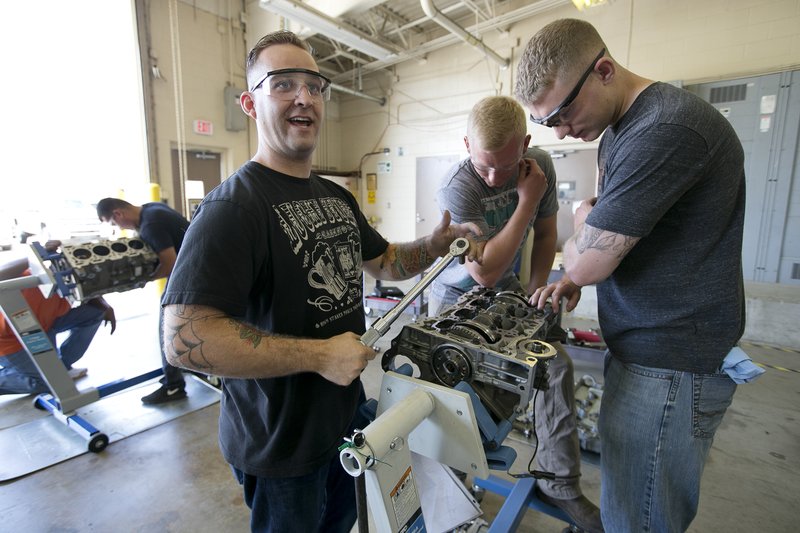WASHINGTON -- The U.S. economy added 215,000 jobs in July, a respectable gain that could raise the comfort level of policymakers at the Federal Reserve as they consider the timing of their long-awaited move to raise interest rates.
The unemployment rate held at a relatively low 5.3 percent, the Labor Department said Friday.
Monthly job growth has averaged 211,286 so far this year, a level suggesting that employers are confident the economy will continue to expand and require more workers in the coming months and years. The government also said employers added a total of 14,000 more jobs in May and June than previously estimated.
"Another solid jobs report suggests the economy is gaining strength and keeps the Fed on track to raise rates as early as the next meeting," in September, Sal Guatieri, a senior economist at BMO Capital Markets, said in a research note.
The Fed has held its key short-term rate near zero since the financial crisis of 2008 to try to energize borrowing, investing and spending. But now the Fed is close to concluding that the economy is strong enough to withstand higher rates.
"Trend job growth is rock solid," said Ryan Sweet, a senior economist at Moody's Analytics Inc. in West Chester, Pa., which correctly forecast the increase in payrolls. "It's more than sufficient to continue to chip away at the slack that's left in the job market."
Still, many Americans remain anxious about the modest economic recovery. The economy's overall growth rate has remained lackluster at an annualized pace of 1.5 percent in the first of half the year, and pay raises have been sluggish, with average hourly earnings in July up just 2.1 percent from a year earlier.
Companies are laying off fewer workers, with the monthly average of people seeking unemployment benefits near a 15-year low. At the same time, roughly 8.3 million Americans are looking for work, and many others have given up.
Since the recession began in late 2007, 14.5 million people have left the job market, either abandoning their search for work, choosing to retire or staying in school longer. The result is that the share of adults working has fallen to 59.3 percent, the lowest level in 31 years.
The pace of hiring has managed to help revive housing and auto sales, according to industry reports. Friday's jobs report also suggests that employers anticipate higher consumer spending. Retailers added 35,900 workers in July, and restaurants 29,300.
Rising home sales helped increase construction jobs by 6,000. Manufacturers added 15,000 jobs, with food, plastics and rubber factories accounting for most of the gain. Business services -- a category that includes lawyers, accountants and engineers -- added 40,000 workers, though the number of temporary employees on short-term contracts fell 8,900.
Average hourly earnings rose 0.2 percent in July, about what was expected but better than in June, when wages were flat. Over the past 12 months, wages have risen at an annual rate of 2.1 percent, not much more than the underlying rate of inflation and one reason many workers remain frustrated with what has been a fitful recovery.
The average workweek also grew slightly, another sign the economy is maintaining some momentum after a slow start to the year.
The Labor Department also revised upward the number of jobs added in May and June by a total of 14,000, bringing the average monthly gain over the past three months to 235,000. Although there was no change last month in the unemployment rate, which is based on a separate survey of households than the payrolls report, the pace of hiring is on track to send the jobless rate below the closely watched 5 percent threshold in coming months.
The overall tone of the report was slightly better than expected because of the upward revisions for May and June, and the increase in average hourly earnings and the length of the workweek, said Ethan Harris, co-head of global economics at Bank of America Merrill Lynch.
"This is very supportive of a September rate hike by the Fed," he said. "At this stage, the Federal Reserve is looking for confirmation. They don't need to see additional strength, and this report pushes them one step closer."
The strong dollar has slowed economic growth by making U.S. exports costlier overseas. And lower gasoline and oil prices have yet to deliver the kind of economic kick they have in the past.
Energy companies responded to oil below $50 a barrel by cutting orders for equipment and pipelines, prompting many manufacturers to slow their hiring. And instead of spending the money saved because of cheaper gas, consumers have mostly pocketed the cash.
Information for this article was contributed by of Josh Boak of The Associated Press, Nelson D. Schwartz of The New York Times and Victoria Stilwell of Bloomberg News.
Business on 08/08/2015
